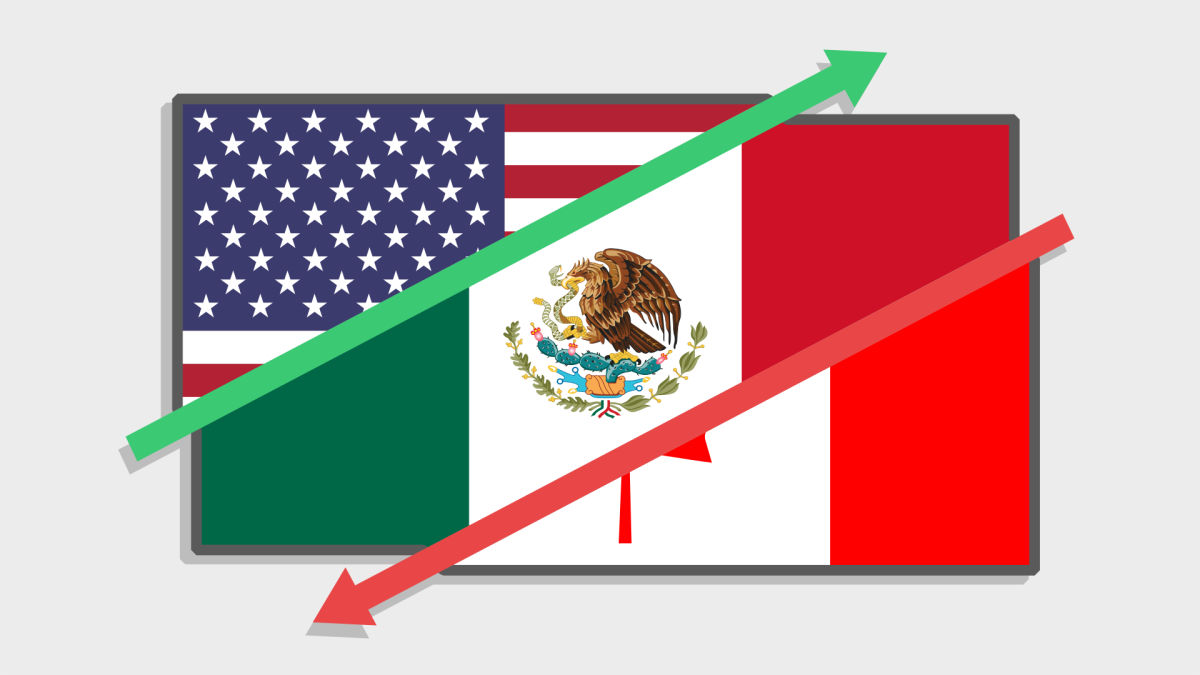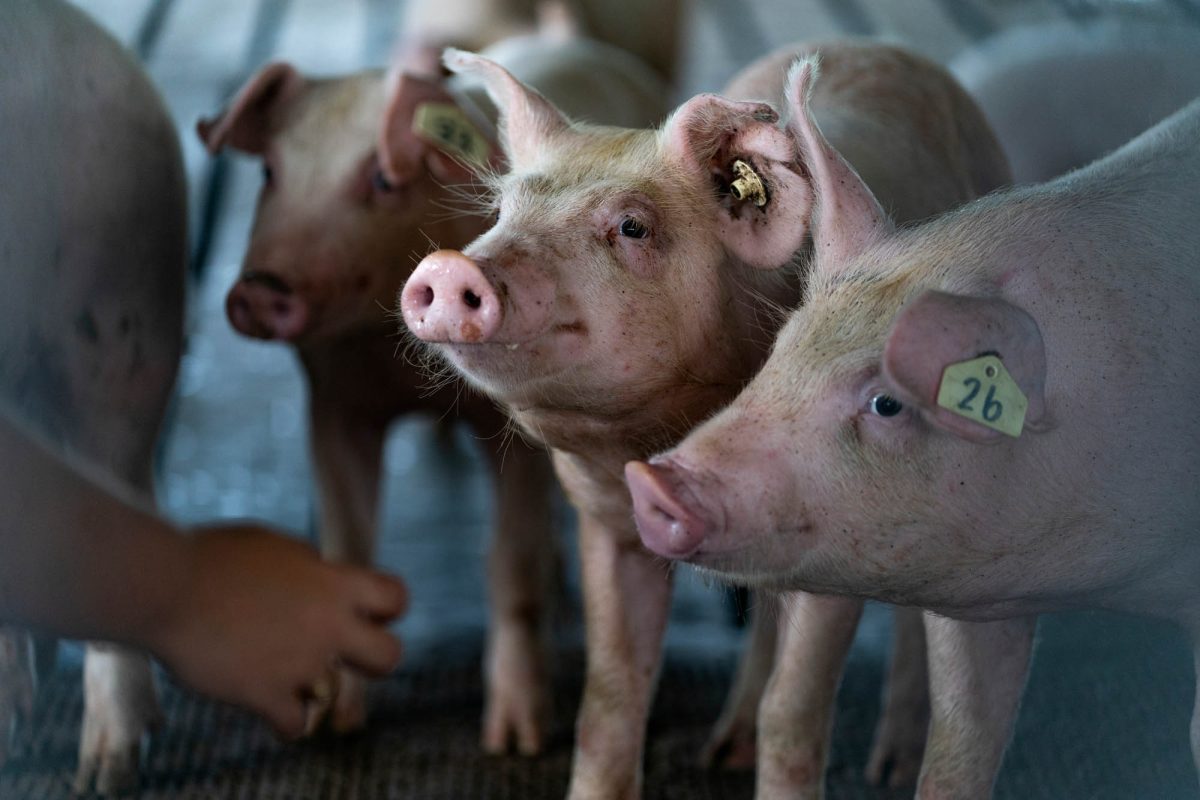On Sept. 30, the Trump administration announced it had reached an agreement on principles surrounding trade issues between the United States, Canada and Mexico.
The text of the agreement, now rebranded the United States–Mexico–Canada Agreement (USMCA), was released the day after the announcement and will have a significant effect on the Texas export-import industry.
The deal reached thus far will not be the end of the a new North American trade deal implementation process. The agreement now goes to Congress for debate and possible ascension or disapproval. The preliminary US-Mexico deal was a sign of progress, according to Raymond Robertson, economics professor and Helen and Roy Ryu Chair in economics and government. Additionally, Canada has now re-joined the discussions after uncertainty about its future in a final agreement on NAFTA renegotiation.
“[Trump is] building off a lot of popular perception about some of the harm that NAFTA had created,” Robertson said. “In particular, this production restructuring had meant that some jobs left the United States and had gone to Mexico and that’s true. And the problem with that is that those jobs when they leave, tend to leave certain communities, affecting certain communities in a very strong way.”
According to clinical professor of finance Julian Gaspar, most of the changes in USMCA are cosmetic.
“There was big talk earlier on during the [2016] primaries and [elections] — ‘NAFTA was [the] worst deal. We’ve got tear it up. We’ve got to revamp NAFTA,’” Gaspar said. “All the changes which have been agreed to are marginal — minor changes — and it’s not a revamp.”
NAFTA, initiated on Jan. 1, 1994 and fully implemented in 2014, was designed to eliminate tariffs, import quotas, licensing schemes and technical barriers to products made in North America. Robertson said products must meet various Rules of Origin (RoOs) to be sold between the countries at zero tariffs with little to no regulatory restrictions. One of the current proposals that has broad ramifications for the large automotive industry in Texas would adjust the RoOs dealing with automotive products.
“Apparently, what we needed to do to take NAFTA from being the worst trade agreement ever in history to a fantastic super duper success was to raise the domestic content requirement from 62.5 percent up to 75 percent, which is not a very big change,” Robertson said.
According to the United States Census Bureau, Canada and Mexico are the top Texas export countries, accounting for about $120 billion of Texas exports in 2017 — 45.6 percent of the total value of all Texas exports. The rejection by Congress of the tripartite USMCA, which includes Canada in favor of a bilateral trade deal with Mexico, would have dramatic consequences for Texan exporters — access to markets to which they have come to rely on would suddenly be heavily restricted.
Robertson said Texas producers have long value chains that extend throughout North America. Each piece of American export probably contains a bit of Canadian or Mexican value added, be it raw materials or a constituent component. If Texas producers were abruptly cut off from Canada, producers would have difficulties in fulfilling production. At the same time, a National Bureau of Economic Research (NBER) study estimated that for every one dollar of Mexican and Canadian imports into the United States, 40 cents and 25 cents of their value, respectively, came from the United States. American exports were used to make a more useful product that was then bought by American consumers.
“Mexico basically restructured its domestic production in order to integrate itself into North American production chains,” Robertson said. “Which means that instead of producing its own good from beginning to end, now it creates parts of different goods that are then added to parts of the goods that are produced in the United States and Canada to produce a final North American product.”
Another Texas sector with a notable stake in NAFTA negotiations is the agricultural industry. The total economic impact of NAFTA on Texas agriculture was more than $3.3 billion in 2016, and it contributed 18,674 jobs to Texas, according to research by Luis Ribera, associate professor of agricultural economics and AgriLife Extension economist.
“The [agricultural] markets complement rather than compete with each other,” Ribera said. “We send a lot of grains to Mexico. A lot of soybeans, a lot of rice, a lot of corn [and] sorghum. We import quite a bit of fresh produce from Mexico. That is because either we cannot produce it year-round or because we’re not as competitive at producing those products with Mexico. In terms of grain production, Mexico is not as efficient as us at producing grains. So the markets complement each other”
According to the same research by Ribera, Mexican agricultural exports alone totalled $833.5 million for the state of Texas and $875.1 million for exports to Canada.
“The U.S. obtains about a third of its farm income from exports,” Ribera said. “In terms of agriculture, [NAFTA] has been a win-win situation. There’s no question about it. One way of putting it is that our trade with the rest of the world has tripled since NAFTA was signed, but it has quadrupled for NAFTA countries.”
Gaspar said when Texans, or Americans in general, are trying to evaluate USMCA, it is essential to take the broadest view possible of the economy and what the nation’s goals should be for trade.
“Some things may be a bit good in the sense that they’re going to have better labor standards in Mexico, but I am concerned about the American consumer,” Gaspar said. “As an American consumer, I am seeing inflation on the wall — inflation and the fact we might be losing some of our major trade partners who might try looking to other countries for future investments.”
Final agreement between NAFTA countries will have major implications for Texas
October 15, 2018
0
Donate to The Battalion
$2790
$5000
Contributed
Our Goal
Your donation will support the student journalists of Texas A&M University - College Station. Your contribution will allow us to purchase equipment and cover our annual website hosting costs, in addition to paying freelance staffers for their work, travel costs for coverage and more!
More to Discover










